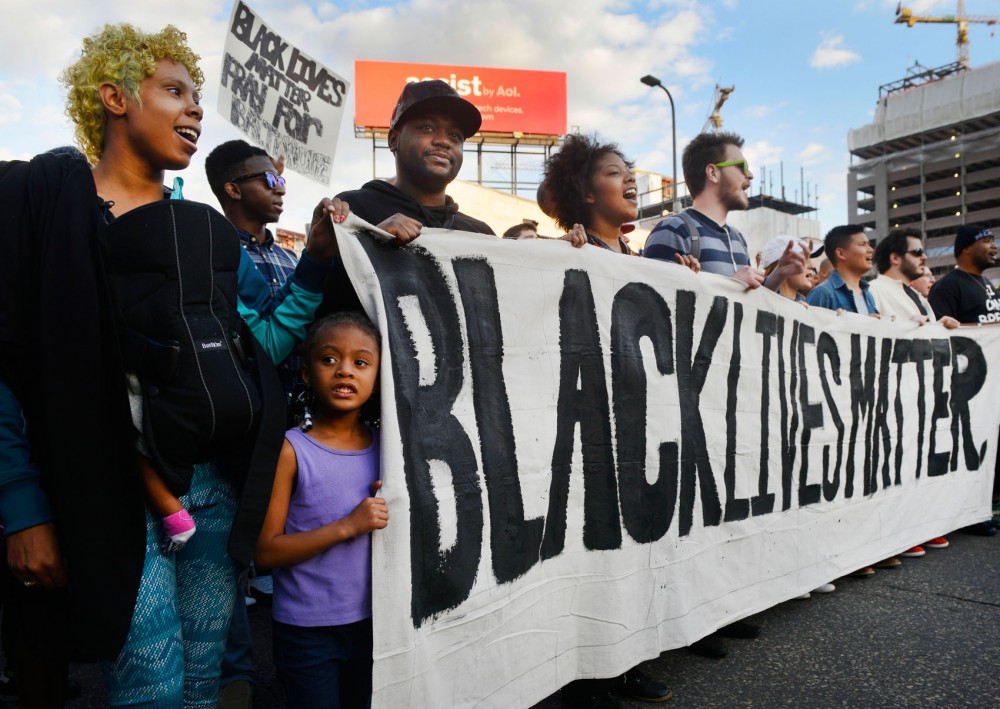About a thousand people marched peacefully through the streets of downtown Minneapolis on Wednesday evening to send positivity to protesters in Baltimore.
The event, organized by Black Lives Matter, came two days after riots erupted in Baltimore following the death of 25-year-old Freddie Gray — a man who died of a spinal cord injury while in police custody earlier this month. Some University of Minnesota students joined swaths of people across the nation calling for an end to police abuse and oppression.
“It’s not just an issue of Freddie Gray,” said Christopher Getowicz, a member of Students for a Democratic Society. “There’s a lot of social and economic issues that go into it. The problems at hand are a little more over-encompassing of entire communities.”
Demonstrators gathered at Gold Medal Park before marching through downtown across the Hennepin Avenue Bridge. Both Washington and Hennepin avenues were shut down for the march. Hennepin Avenue reopened at about 9 p.m.
Anger from protesters over the police-involved deaths of young black men has spilled into the streets of cities across the United States. Demonstrators in Minneapolis joined other rallies across the country, including those in New York City, Washington, D.C., and Boston.
Gray’s death marks the most recent example of a black man killed by police. Eric Garner in New York City, Michael Brown in Ferguson, Mo., and Marcus Golden in St. Paul illustrate other recent deaths at the hands of police.
Chants of “no justice, no peace” and “black lives matter” rung loudly throughout Wednesday’s march, and people of all ages and races turned out to protest police brutality.
Innocent Galinoma, who arrived in the U.S. from Tanzania in 1989, said he is appalled that conversations about race and police brutality are still occurring in the U.S.
He said he faced police abuse while demonstrating against apartheid in Africa as a younger man. Now, years later, Galinoma said he’s been singled out by Minneapolis police simply for being black.
Mica Grimm, an organizer for the Minnesota Public Interest Research Group and Black Lives Matter, said the event was intended to shed light on social injustices and police brutality occurring across the U.S.
Much recent news coverage of the events in Baltimore has focused more on violence, including looting and arson in the city, rather than the underlying issue of racial inequality, she said.
“We felt the need and the desire to show them that we see them and hear them and that we acknowledge their pain,” she said of the protesters in Baltimore. “This is us just trying to elevate that story and get people to look at why that reaction happened.”
Getowicz said nationwide issues — like widespread poverty, lack of access to jobs and health care and poor education — cause many people to become frustrated, which results in them lashing out like some people did in Baltimore.
Sam White, a youth development and leadership graduate student at the University, said she joined the march to be able to tell the north Minneapolis students she works with about race inequality issues.
“Movements like this are so critical to their lives and the lives of the people in their communities,” White said.
She said she understands the frustration youth in Baltimore might feel because many generations of people in that city may have faced racism.
“Seeing that manifest in really destructive and violent ways, that’s valid for them to be frustrated,” she said.








